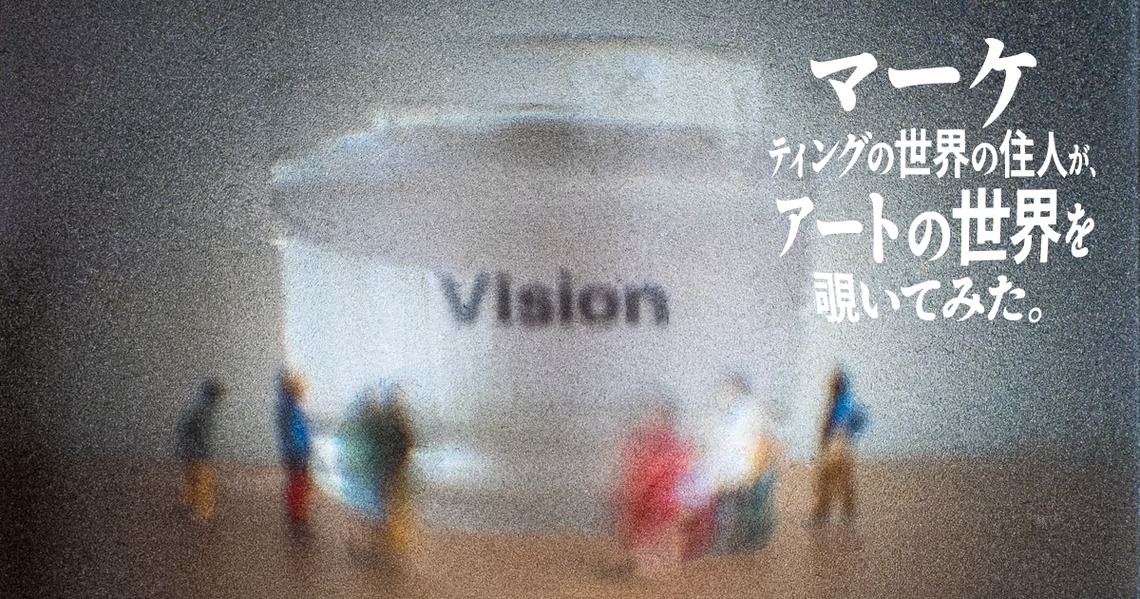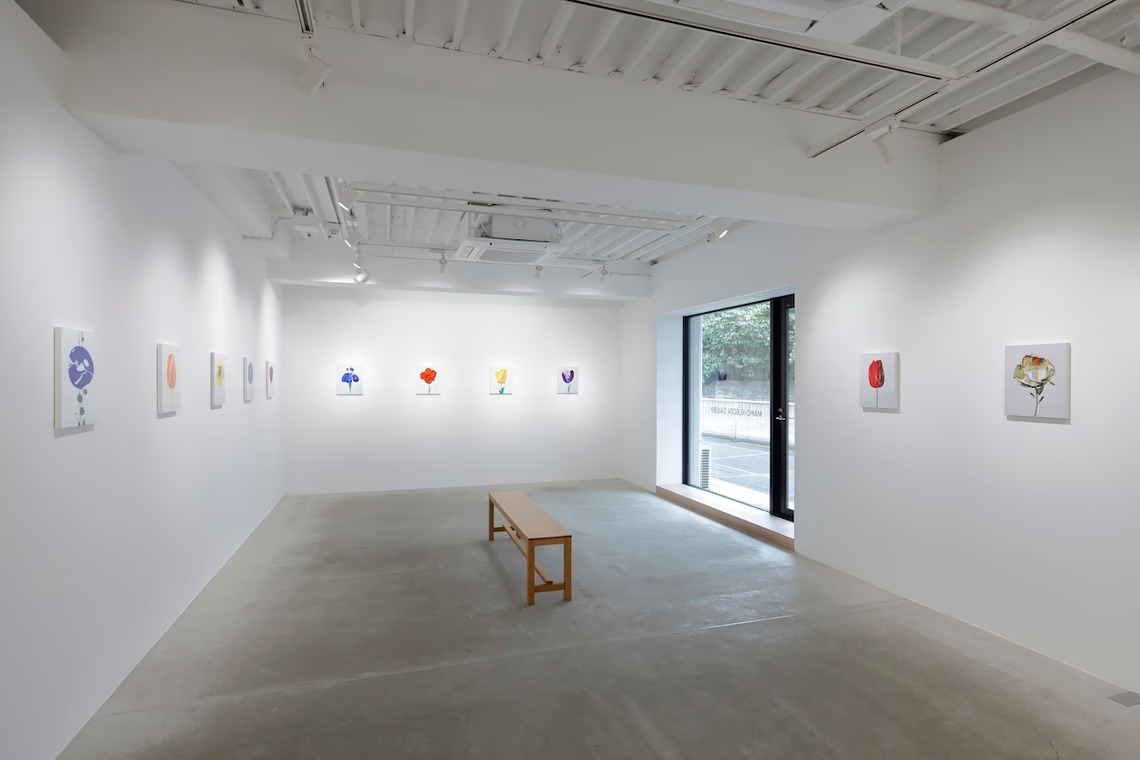Note: This website was automatically translated, so some terms or nuances may not be completely accurate.
Published Date: 2025/10/16
【Vision】

A textbook that made my heart race. Not from my student days, but something from relatively recent years. I heard rumors that Nihon Bunkyo Publishing's "High School Art" was no ordinary book, so I went to a textbook supply store for the first time and bought it. How can I put it? Even though it's a textbook, page after page, it's like a treasure chest. Even now, opening it makes my heart race.
Gerhard Richter's "27. April 2015," from his "Overpainted Photographs" series, is the cover of this textbook. Incidentally, in the Bijutsu Techo survey "Readers' Choice Best Exhibitions," the top pick for 2022 was the "Gerhard Richter Exhibition" at the National Museum of Modern Art, Tokyo.Richter, a German artist born in 1932, has multiple series—or rather, approaches—and produces an astonishing number of works within each. Whether being featured on a textbook cover serves as a benchmark is unclear, but it seems undeniable that Richter, a master living in our time, is an artist whose name will be etched into the long history of art, continuing into the future.
Learning that he has a series called "Photo-Paintings"—not "realistic paintings," but "photographic-like paintings"—left me confused and a bit overwhelmed by the difference between being realistic and being indistinguishable from a photograph. The history of modern art that led to this kind of expression feels somehow terrifying. What a lofty height.
◆
By the way, does anyone picture it just from hearing "cheese that looks like it came straight out of Tom and Jerry"? It's a triangular block with quite a few large air bubble-like holes. Honestly, I can almost picture Jerry tunneling through those holes.I'm tracing back to childhood memories, so I'm not entirely sure. Maybe it's because I'm not that fond of cheese myself, but I've never actually seen that kind of cheese in real life. Yet, there I am, recognizing that cheese from Tom and Jerry as "the quintessential cheese." Strange.
One day, while wandering through a shopping mall, I passed the cake section. Something caught my eye—cheese!? My lower half kept moving forward, while my upper half was transfixed by this "cheese-like thing in the cake section." I nearly tripped. Getting closer, I realized it was a cheesecake. It was imitating, or recreating, that "cheese-like" quality using cheesecake (meaning cheese as an ingredient).Hmm, complicated. Deeply intricate. I couldn't look away.
I learned that in the art world, a technique called trompe l'oeil is common. Essentially, "trick art." I'm familiar with trick art. Water appears to flow down from the floor, and naturally, the spot it falls on should be lower than that floor. But if you follow the floor with your eyes, it's actually the same level floor with no step or slope. I seem to recall seeing Maurits Escher's picture books like that often in a hospital or some waiting room when I was a kid.A more recent optical illusion experience was at photo spots in places like the Cup Noodles Museum. Since it's not a painting, is it a trick space? That's more fittingly called trick art, with its friendly, mass-market appeal.
◆
Another day, I was wandering aimlessly toward the National Stadium. A bit early, I thought. Wait, there was a gallery around here, right? I decided to stop by MAHO KUBOTA GALLERY, where I'd seen a Julian Opie exhibition before. Through the glass walls, I could see paintings of single flowers. So beautiful.Rich, thick paint. From those slightly sticky clumps, something that could only be described as a flower was recreated—not in a photorealistic way, but with exquisite brushwork. It reminded me of Yokohama Ryusei in the movie "The Line Draws Me," swiftly drawing lines with an ink brush to perfectly depict bamboo. Here, too, the shape of the flower (petals) was drawn in one bold, decisive stroke, without hesitation. How skillful!
The artist who created this flower is Teppei Takeda, a contemporary artist (I'm completely digressing here, but I find myself using the honorific "san" for living Japanese artists while addressing overseas artists by their first names regardless of whether they're living or not. Sorry about that).The flower has areas glistening with light and others in shadow, so even though it's a flat painting, it must have quite a bit of texture or raised paint. While it's obvious to anyone that it's not a real flower, the elegance of a flower is undeniably present there. You can't help but feel its beauty in its simplicity.
Speaking of flowers, I do have some personal memories tied to them. But it's not just that; it's also the stories outside myself. Like the flower Lupin produced like a magician in "The Castle of Cagliostro," the flower Kyo gave Yusuke to offer to Raizen in "Yu Yu Hakusho," or the flower that wouldn't bloom during a slump in "Hanakappa." Whether they're from within me or outside, the more they're part of a story, the more they seem to bring sentimentality along with them.
Yet, the elegant single bloom born from rich paint, standing alone against a plain background, strangely didn't connect with my dampened emotions.Without projecting myself, memories, or stories onto it, its beauty simply stood out. Neither "The Only Flower in the World" nor "Red Sweet Pea" played in my head. It felt closer to Ogata Kōrin's design-focused irises or Sen no Rikyū's imagined morning glories. Above all, it possessed a resolute presence.
About 20 years ago, I had the rare chance to speak with product designer Naoto Fukasawa. We talked about "The Outline of Design" from his portfolio, and about "things that seem like they should exist but don't." Fukasawa's words themselves fit perfectly into the outline within me, and they still reside there with just the right pressure (he was such an idol to me that I cheekily got him to sign my portfolio).
If beauty has an "outline," I think it's like Takeda's flowers.
◆
The incident occurred after I entered the gallery. Approaching the canvas, I noticed something unusual. It should have been painted with thick, rich paint, yet I couldn't see any raised paint? No texture? Getting closer, I immediately realized it wasn't a photographic work—taken after painting with abundant paint and then photographed under strong lighting.Instead, the glossiness of ketchup and the brushstrokes of a FIRST TAKE were meticulously rendered, stroke by stroke, with a brush. Photographic-like reproduction, done by hand.
Realistic paintings are common, but Takeda-san set his subject for realism as "flowers painted with thick layers of paint, elevated to a higher level of abstraction." It was truly an event for me, something entirely different from the friendly trick art experience. What a scheme.
There are situations like "○○ on ○○," as in "CM production." Or "○○ within ○○." Takeda's work isn't a realistic reproduction of flowers; it looks like a mass of paint. So rather than "flowers on a painting," it's more like "paint on a painting." Yet that beauty seems to capture the essence of flowers, making it "the beauty of flowers on paint on a painting."And just when you're about to conclude, "How beautiful," realizing it's trompe l'oeil makes you acutely aware once more: this beauty was born through painting, and could only have been born through painting. You marvel at the supreme act of human creation that is painting. It's "painting the act of painting" – something that wouldn't work in sculpture, manga, or animation.
Painting, paint, flowers, beauty. The existence of various layers. Like turning pages, I direct my awareness to layers of different qualities. Looking carefully, one by one, it feels as if I myself am slowly permeating the layered structure. What should be the static act of "seeing" becomes, before I know it, dynamic. And as I dynamically move from layer to layer, a kind of trust in this work I'm seeing grows stronger. Maybe I'm getting hooked.
If "vision" can be interpreted as a process of permeation, encompassing insight, foresight, perspective, and even an ideal form, then it becomes profoundly essential—not just for me as a viewer, but for me as a businessperson and for a broader, more authentic version of myself. Beyond mere vision. Who knew it could be such a rich endeavor.

Photo by: Keizo Kioku
Teppei Takeda Profile
Image Production: Satoshi Iwashita
The information published at this time is as follows.
Was this article helpful?
Newsletter registration is here
We select and publish important news every day
For inquiries about this article
Author

Yutaka Miyagawa
Dentsu Inc.
Marketing Division 5
Consultant
After the Great East Japan Earthquake, I began to feel a desire to reflect on Japanese culture and future generations.


